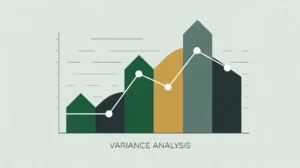Importance of the Debt to Net Assets Ratio
The debt to net assets ratio compares what a nonprofit owes to what it owns outright. It highlights how much of the organization’s resources are already pledged to creditors relative to its equity base. This matters because a high ratio means that debt obligations are consuming financial flexibility, leaving fewer resources available for programs, innovation, or reserves. For nonprofits in social innovation and international development, where projects often span multiple years and geographies, this ratio is a critical measure of whether growth is funded sustainably or through excessive borrowing.
Definition and Features
The debt to net assets ratio is defined as:
Total Debt divided by Total Net Assets.
Key features include:
- Solvency Indicator: measures the weight of debt relative to the nonprofit’s equity base.
- Risk Benchmark: lower ratios suggest stronger solvency and borrowing capacity.
- Decision Tool: informs whether additional borrowing is feasible or risky.
- Donor Confidence: donors are more comfortable funding organizations with manageable debt levels.
How This Works in Practice
If a nonprofit has $2 million in total debt and $8 million in total net assets, its debt to net assets ratio is 0.25. This suggests the organization has sufficient equity to cover its debt, reassuring both the board and external funders. A nonprofit with $6 million in debt and only $4 million in net assets, however, would have a ratio of 1.5. It owes more than it owns, and that raises significant red flags about solvency. Finance committees often monitor this ratio when considering large capital projects, lines of credit, or multi-year commitments.
Implications for Social Innovation
For nonprofits in social innovation and international development, the debt to net assets ratio provides a lens on financial resilience and credibility. Large donors, multilateral agencies, and governments often require evidence that an organization is not overleveraged before awarding grants. A strong ratio signals that debt is manageable and mission delivery will not be compromised by repayment burdens. A weak ratio can limit access to funding, especially for multi-year initiatives that require confidence in long-term solvency. By monitoring and managing this ratio, nonprofits can strike a balance between leveraging debt for growth and safeguarding their mission sustainability.







